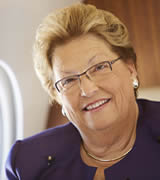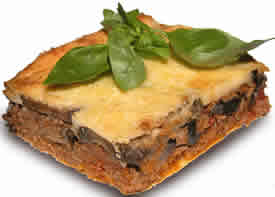| BlueSky Business Aviation News | ||||||||||||||||||
| . | ||||||||||||||||||
Fit for either passenger or crew, this one dish meal makes sense for aviation. Your food source can package it into individual casserole dishes that can go from the oven to the plate, or sent bulk so you can serve multiple passengers from one container.
As it turns out, casseroles are one of the best meal or side dishes to serve on board an aircraft. They have all the necessary components in one easy to serve container which make them the perfect food to be reheated on board your aircraft. Here are a few reasons I believe that casseroles are just right for the aircraft. The ingredients are generally fully cooked prior to assembly. They are often layered so a crunchy topping can be added for that taste bud enhancer we need for high altitudes. Casseroles can have an assortment of herbs and spices; they usually contain a sauce, broth, or liquid to help keep food moist during the reheating process in the dry aircraft environment. The flavor profiles found in casseroles can vary from country to country. Casseroles provide an unlimited number of options from entrees to side dishes to breakfast and brunches. Casseroles can be a hearty, filling and comforting food for our mind and soul. But beware of the risks Casseroles can be called the perfect aircraft meal, but . . . yes there is a “but “here. Casseroles have made the list of high risk foods, ones with which we should be cautious using. Let me explain the high risk part of a casserole. They are high risk for potential unseen allergens which may result in an allergic reaction by the one consuming the casserole. Because casseroles have numerous components mixed together, an allergen may not be too easily noticed before consumed. In addition, they are considered high risk for bacteria growth and development. Bacteria loves moisture, and casseroles are moist. Casseroles, whether entrée or other, contain partially or fully cooked food ingredients which may or may not have been handled correctly . . . they may have been assembled warm, giving bacteria the opportunity to grow; they may have been exposed to more opportunities for contact with more bacteria (cross contamination); they are slightly more difficult to reheat . It is essential that casseroles be reheated to a safe internal temperature to kill off the bacteria that may have grown during their assembly, delivery and wait time prior to the reheating. This caution does not mean you should not have a casserole on board. So why do I suggest them? If you know the risk, assess that risk, and place the proper corrective action into place when reheating and serving them on board, they are perfect for providing a delicious meal. When reheating or holding a casserole on the aircraft pay a little more attention to the details, potential time and temperature abuse. Casseroles around the world As we travel the globe we will find casseroles characteristic to every region on the world. Since they are representative to the specific region, you will find many varieties of the same dish providing a different taste and look as you travel.
Moussaka is an eggplant and/or potato based dish popular in Balkan and Mediterranean cuisines. There are many local and regional variations in and around the region from Athens to Istanbul. (A bit of trivia for you . . . the same name and recipe is found throughout the lands that were formerly part of the Ottoman Empire ). In Greece, the dish is layered and typically enjoyed hot. In Turkey, it is sautéed and served in a casserole, and is consumed warm or at room temperature. In Arabic countries, a variation of the same recipe is eaten cold. Most versions are based primarily on sautéed eggplant and tomato, usually with minced meat. The Greek version includes layers of meat and eggplant topped with a Béchamel Sauce, and baked. The Turkish musakka is not layered. Instead, it is prepared with sautéed eggplants, green peppers, tomatoes, onions, and minced meat. It is eaten with cacik and pilaf. There are also variations with zucchini, carrots and potatoes. A Bulgarian pastry chef we once had at Tastefully Yours prepared the Bulgarian version, for us. She used potatoes instead of eggplant, and ground pork, and the top layer was yogurt mixed with raw eggs and few spoonfuls of flour. Each layer is cooked on its own and layered in a pan and baked until the top is browned. Casseroles are global. I would surmise that the most famous of all casseroles is Lasagna, a global favorite and internationally recognized. The same reheating precautions need to be adhered to as with any casserole. France has Pâté de pommes de terre whose main ingredients are potato slices and crème fraîche filled into a puff pastry crust and baked to a luscious golden brown. Some variations contain parsley, onion, garlic and meat. The Portuguese have a wonderful casserole called Bacalhau à Gomes de Sá. It is a succulent blend of bacalhau (salted and dried cod fish) , potatoes, eggs, olives, olive oil and onion. It is a specialty from the northern city of Porto. The Swedish have their infamous traditional casserole called Janssons frestelse. It is made of potatoes, onions, pickled sprats ( an oily fish similar to anchovy or sardine), bread crumbs and cream. It was a frequent addition to our Christmas meal that my grandmother prepared. The potatoes are cut in thin strips and layered in a roasting tin, alternating with the sprats and chopped onions in between. Salt and pepper is put over each layer, then cream is added so that it almost fills the tin. Not to ignore the Italians . . . Timballo is a dish consisting of baked pasta, rice or potatoes, usually with one or more other ingredients (cheese, meat, fish, vegetables, and fruit for example) included. This casserole is prepared in a domed pan with eggs or cheese used as a binder. If pigeon or game birds are used as a filling, rice is generally part of the fillings along with vegetables such as peas. As you explore the culinary wonders of the regions of the world, inquire about the local casseroles offered by your food sources. Always remember to address the risks associated with this food item, and take appropriate precautions in its handling.
About Paula Kraft . . . Paula Kraft is the founding partner of the DaVinci Inflight Training Institute located in Fort Lauderdale, Florida and the founder/president of Tastefully Yours Catering, an aviation specific caterer, located in Atlanta, Georgia for over 35 years. Paula is active with many aviation and catering-related groups including the International Caterers Association, the International Inflight Food Service Association and is a board member of Women in Corporate Aviation. She is the past chair of the NBAA Flight Attendant Committee Caterer’s Working Group for 15 years perfecting unique catering training sessions for NBAA conferences and events. Currently, she serves on the NBAA Flight Attendant Advisory Committee and is a member of the Training and Safety Subcommittee. Paula was a founding member of the Steering committee for the creation of a European Flight Attendant Committee and conference and serves as a subject matter expert to the board of International Standard for Business Aircraft Handlers (IS-BAH). From Paula . . . I have coordinated training programs and clinics for NBAA and EBAA conference attendees for over 10 years, created mentoring programs for caterers and flight attendants to broaden their aviation culinary skills, and to assist them in adapting to the unique challenges and constraints found in catering for general aviation. I recognize the need for training and have worked closely with flight departments, flight crews, schedulers and customer service reps at the FBOs to ensure that catering specific training provides information and skills necessary to reduce risk while assisting them in their job duties that include safe food handling, catering security, accurate transmission of food orders, and safe food production, packaging and delivery. I fell into aviation catering quite by accident. I was the in-house caterer and bakery supplier for Macy’s department stores in Atlanta when catering was ordered for a Macy’s customer which was soon to change my life. After the client enjoyed the catering provided, I was summoned to the client’s corporate office to provide several of the items delivered through Macy’s to the executive dining room. Within a week, I was providing food for the flight department and my first order was for the President of a foreign country (as I was too be told soon after). So, here I am, some 35 years later, still loving every minute of every day in aviation catering.
|
||||||||||||||||||




